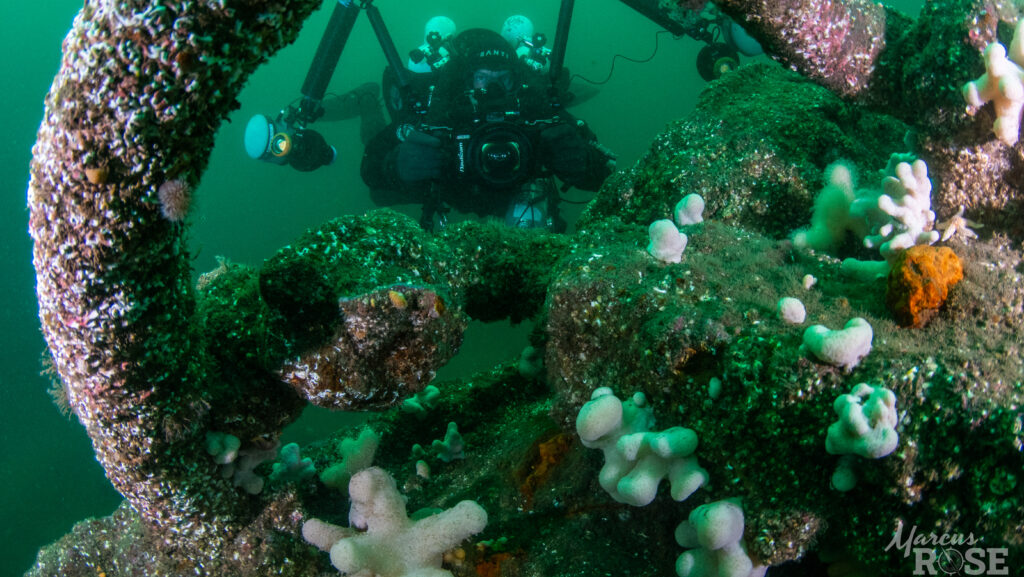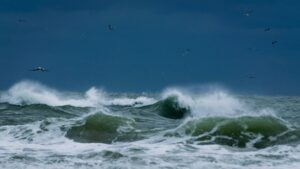Study reveals how UK’s shipwrecks are providing a refuge for marine life

A new study conducted by the University of Plymouth and Blue Marine Foundation has shown that the estimated 50,000 shipwrecks found around the UK’s coastline have been acting as a hidden refuge for fish, corals and other marine species in areas still open to destructive bottom towed fishing.
Many of these wrecks have been lying on the seabed for well over a century, and have served as a deterrent to fishers who use bottom towed trawling to secure their catches. As a result, while many areas of the seabed have been damaged significantly in areas of heavy fishing pressure, the seabed in and around shipwrecks remains largely unblemished.
The new research found that the average density of marine life in areas still open to trawling was 240% greater within wreck sites than in sites actively being used for bottom towed fishing. In parts of the seabed within a 50m radius of the wrecks, the difference was even greater with the density of marine life 340% greater than in the control sites.
Conversely, in sites closed to trawling, the abundance was 149% greater than on wrecks and 85% greater than on the seabed within a 50m radius of the wrecks.
The study, which has been published in the journal Marine Ecology, is the first to demonstrate the increased ecological importance of shipwrecks – and the areas surrounding them – in areas of heavy fishing pressure.
“The industrial use of bottom towed fishing gear has been commonplace since the 1800s, and has significantly altered marine communities and ecosystem services,” says Jenny Hickman, the study’s lead author who completed the research as part of her MSc Marine Conservation programme at the University of Plymouth.
“Outside of legal protection, only areas inaccessible to trawlers are offered any protection, which is why shipwreck sites are rarely subject to trawling pressure. As many have been in situ for more than 100 years, they offer a baseline of ecological potential when trawling pressure is reduced or removed.”
The research was conducted around five shipwrecks off the Berwickshire coast, which are all thought to have sunk in the late 19th and early 20th centuries. Constructed from a range of different materials, they sit between 17 and 47metres beneath the ocean surface, with some in areas open to bottom towed fishing and others in areas where some types of fishing are restricted.
The research teams, supported by local boat crews, gathered video footage of the shipwrecks, the surrounding 50m radius, and control locations more than 150m from the wreck site.
Joe Richards, Scotland project manager for Blue Marine Foundation and one of the study’s co-authors, comments: “It has long been thought that shipwrecks could be playing an important role in providing sanctuary for marine species to utilise. It is brilliant to see this proven in this study. The research provides and insight into what might be possible if bottom towed fishing activity is reduced. This feeds into our wider understanding of shipwrecks potential to contribute to ecosystem recovery and enhancement, given the sheer number found on the seabed.”
The University of Plymouth and the Blue Marine Foundation also work together to examine the benefits of Marine Protected Areas (MPAs), and researchers have said that this latest study also shows the benefits of MPAs status.
“In recent years, the UK has made significant strides in terms of measures to protect the marine environment,” adds Dr Emma Sheehan, associate professor of marine ecology and senior author.
“There is still much to be done to reach the goal of having 30% of the ocean protected by 2030, but if we are to get close to that we need detailed evidence about what makes our ocean so special and any existing initiatives that are working well. This study builds on our existing work in that regard, and highlights an impact of past human activity that is actually having a positive impact on the seabed today. It is unquestionably something that should be factored into future marine management plans.”
Main image credit: marcusrose.gue










